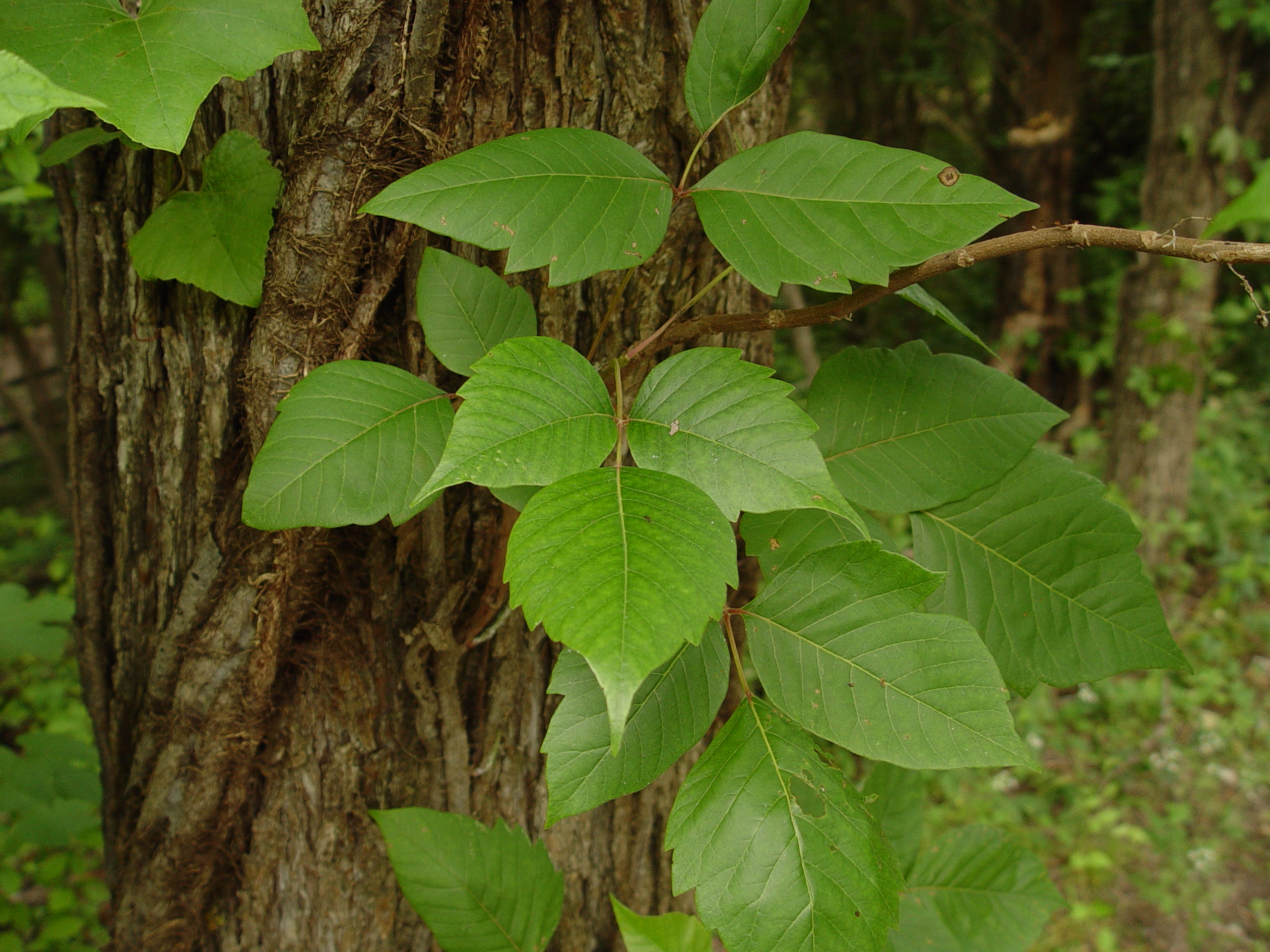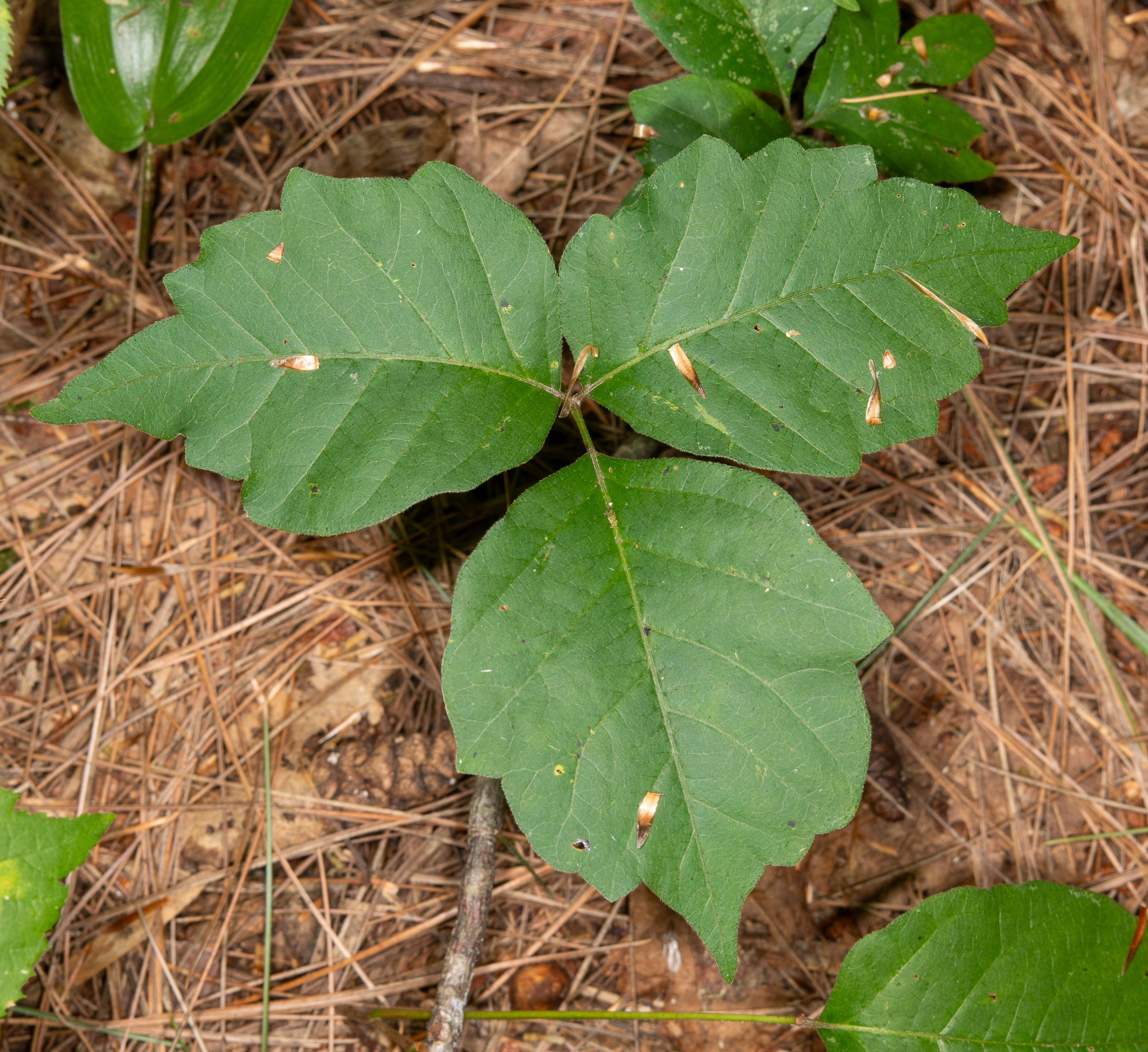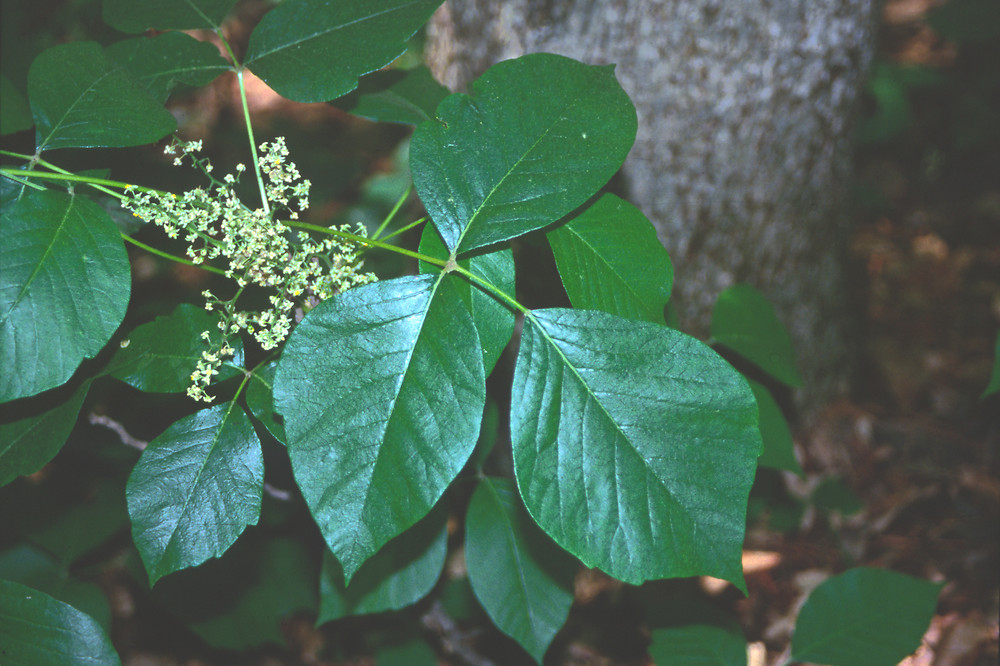**For many who venture outdoors, the mere mention of "poison ivy" sends a shiver down the spine. This notorious plant, scientifically known as *Toxicodendron radicans*, is a common native plant found throughout North America, renowned for its ability to cause severe skin irritation. Despite its widespread presence and the discomfort it inflicts, understanding this plant is the first step toward avoiding its unpleasant effects and even appreciating its ecological role.** This comprehensive guide aims to demystify *Toxicodendron radicans*, providing you with the knowledge to identify, avoid, and manage encounters with this pervasive plant. From woodlands and fields to pastures, farms, and even home landscapes, *Toxicodendron radicans* is an ever-present part of the natural world. Its adaptability allows it to flourish in diverse environments, making awareness crucial for anyone spending time outdoors. While it's infamous for the itchy rash it causes, this article will delve into its botanical characteristics, distribution, the science behind its toxicity, and practical advice for prevention and treatment, ensuring you're well-equipped to navigate its presence. ## Table of Contents * [Understanding Toxicodendron Radicans: A Misunderstood Plant](#understanding-toxicodendron-radicans) * [What Exactly is Poison Ivy?](#what-exactly-is-poison-ivy) * [The Many Forms It Takes](#the-many-forms-it-takes) * [Where Does Toxicodendron Radicans Thrive?](#where-does-toxicodendron-radicans-thrive) * [Identifying Toxicodendron Radicans: The "Leaves of Three" Adage and Beyond](#identifying-toxicodendron-radicans) * [Leaflets and Their Variations](#leaflets-and-their-variations) * [Flowers and Fruits: A Closer Look](#flowers-and-fruits-a-closer-look) * [The Culprit: Urushiol and Its Effects](#the-culprit-urushiol-and-its-effects) * [The Allergic Reaction Explained](#the-allergic-reaction-explained) * [Symptoms and Severity](#symptoms-and-severity) * [Prevention is Key: Avoiding Contact with Toxicodendron Radicans](#prevention-is-key) * [When Contact Happens: First Aid and Treatment for Poison Ivy Rash](#when-contact-happens) * [The Ecological Role of Toxicodendron Radicans](#the-ecological-role) * [Dispelling Myths and Promoting Awareness](#dispelling-myths) * [Conclusion](#conclusion)
Understanding Toxicodendron Radicans: A Misunderstood Plant
*Toxicodendron radicans*, commonly known as eastern poison ivy or simply poison ivy, is a species of allergenic flowering plant that commands respect due to its potent skin-irritating properties. Despite its common name, it is not a true ivy at all. This is a crucial distinction that helps in understanding its botanical identity and avoiding misidentification.What Exactly is Poison Ivy?
Instead of being a true ivy, *Toxicodendron radicans* is a member of the cashew and pistachio family, Anacardiaceae. This family includes many well-known plants, some of which also contain urushiol, the oily resin responsible for the allergic reactions associated with poison ivy. This botanical classification immediately sets it apart from ornamental ivies and highlights its unique chemical composition. There are numerous subtaxons and forms of *Toxicodendron radicans*, indicating its genetic diversity and adaptability across various environments. It is also important to note that it is different from western poison ivy, *Toxicodendron rydbergii*, and resembles a number of other species, making accurate identification paramount.The Many Forms It Takes
One of the most challenging aspects of identifying *Toxicodendron radicans* is its incredible versatility in growth habit. This plant can manifest in several forms, making it a master of disguise in the landscape. It can appear as a bushy, erect, or trailing shrub in sunny areas, particularly when unsupported. When it finds a suitable host, it transforms into a woody climbing vine, twining on trees and other structures. These climbing vines are distinctive, often featuring hairy, aerial rootlets that cling firmly to surfaces, providing a tell-tale sign of its presence. When unsupported, it may take a shrubby growth form of slender, unbranched stems up to 1 meter tall. This adaptability means that whether you're walking through a dense forest, an open field, or even your backyard, you might encounter *Toxicodendron radicans* in a form you least expect.Where Does Toxicodendron Radicans Thrive?
The widespread distribution of *Toxicodendron radicans* across North America is a testament to its hardiness and adaptability. It is native throughout the United States and much of southern Canada, making it a common encounter for those who spend time outdoors. This plant is not particular about its location, thriving in a wide range of habitats. *Toxicodendron radicans* prefers rich soil with good drainage and plenty of water, but it can grow almost anywhere. It likes full sun but can tolerate partial shade, demonstrating its resilience to varying light conditions. You'll find it flourishing in woodlands, where it often climbs trees to reach sunlight. It also invades open fields, pastures, and even disturbed areas like farms and home landscapes. Its ability to colonize diverse environments underscores the importance of being able to identify it in any setting. Understanding its habitat, characteristics, and distribution is key to avoiding unwanted contact.Identifying Toxicodendron Radicans: The "Leaves of Three" Adage and Beyond
To those who spend copious time outdoors, the plant is trivially easy to recognize, though communicating the recognition pattern to others is not always easy. The adage "leaves of three, let it be" is perhaps the most famous and essential piece of advice for identifying *Toxicodendron radicans*. This simple rhyme serves as a crucial first step in recognizing this allergenic plant. However, accurate identification requires a deeper understanding of its characteristics, as other plants can also have three leaflets.Leaflets and Their Variations
Each leaf of *Toxicodendron radicans* is made up of three leaflets, more or less notched at the edges. These leaflets can vary significantly in appearance, which often leads to confusion. They can be shiny or dull, smooth or toothed, and even lobed. The color can also change with the seasons, from reddish in spring, to green in summer, and then vibrant red, orange, or yellow in autumn before the leaves drop. This deciduous nature means that even in winter, the woody vines, with their distinctive hairy aerial roots, still contain the toxic oil. Learning how to identify poison ivy, a native perennial vine with shiny leaves and green berries, requires attention to these details beyond just the number of leaflets.Flowers and Fruits: A Closer Look
While the leaves are the most commonly recognized feature, the flowers and fruits of *Toxicodendron radicans* also offer identification clues, especially during certain times of the year. The plant produces tiny, inconspicuous flowers, typically greenish to yellowish, arranged in panicles in leaf axils. These are incomplete, imperfect, and actinomorphic flowers. The calyx has 5 green, unfused sepals, and the corolla has 5 white petals. It's important to note that *Toxicodendron radicans* has separate male and female plants, meaning some plants will produce flowers that develop into fruits, while others will not. Following the flowering period, typically in late summer and fall, the plant develops clusters of small, round, greenish to yellowish-white berries. These berries, often resembling small pearls, persist through winter and are a significant food source for wildlife. In natural areas, its berries provide nutritious food, particularly for birds, which then help disperse the seeds. Understanding its habitat, distribution, flower, fruit, and seed characteristics, along with its identification features, provides a comprehensive picture of *Toxicodendron radicans*.The Culprit: Urushiol and Its Effects
The infamous reputation of *Toxicodendron radicans* stems entirely from a single, potent substance: urushiol. Poison ivy earns its name from urushiol, an oily resin found in all parts of the plant, including the leaves, stems, roots, and even the berries. This toxic oil is the primary cause of contact dermatitis in most people who come into contact with the plant.The Allergic Reaction Explained
Urushiol is an oily resin that, upon contact with skin, can trigger an allergic reaction in approximately 85% of the population. This reaction is a type of delayed hypersensitivity, meaning symptoms typically don't appear immediately but rather hours or even days after exposure. The oil binds to skin proteins, and the body's immune system recognizes this combination as a threat, launching an inflammatory response. Even dead plants or clothing that has come into contact with the oil can cause a reaction, as urushiol remains active for a long time. This is why it's crucial to thoroughly clean any tools, clothing, or even pets that might have brushed against *Toxicodendron radicans*.Symptoms and Severity
The symptoms of a *Toxicodendron radicans* rash can range from mild to severe, depending on an individual's sensitivity and the extent of exposure. Typically, the reaction begins with intense itching, followed by redness, swelling, and the development of characteristic blisters or fluid-filled bumps. These blisters can be small or large and may eventually weep or crust over. The rash does not spread through the fluid in the blisters, but rather from urushiol that may still be on the skin or transferred from contaminated objects. The severity of the reaction can vary greatly from person to person and even in the same person over time. In severe cases, the rash can cover large areas of the body, cause significant swelling, and may require medical attention.Prevention is Key: Avoiding Contact with Toxicodendron Radicans
Given the unpleasant nature of the rash caused by *Toxicodendron radicans*, prevention is undoubtedly the best approach. Knowing how to identify the plant in its various forms is the first and most critical step. Always be vigilant when in areas where it is known to grow, such as woodlands, fields, and even your own backyard. When working or recreating in areas where *Toxicodendron radicans* might be present, wear protective clothing. Long sleeves, long pants, gloves, and closed-toe shoes can create a barrier between your skin and the plant's toxic oil. Consider wearing old clothes that can be easily washed or even disposed of if heavily contaminated. After any potential exposure, it's vital to clean exposed skin and clothing thoroughly. Washing with soap and water as soon as possible after contact can help remove or deactivate the urushiol before it has a chance to bind to the skin. Remember, all parts of the plant contain a toxic oil called urushiol that causes skin irritation.When Contact Happens: First Aid and Treatment for Poison Ivy Rash
Despite the best preventative measures, accidental contact with *Toxicodendron radicans* can still occur. If you suspect you've touched the plant, immediate action can significantly reduce the severity of the reaction. The first step is to wash the affected area thoroughly with soap and cool water as soon as possible, ideally within minutes of exposure. This helps to remove or dilute the urushiol before it fully penetrates the skin. Don't forget to wash any clothing, tools, or pets that may have come into contact with the plant. Once a rash develops, various over-the-counter remedies can help alleviate symptoms. Calamine lotion, hydrocortisone cream, and oral antihistamines can help reduce itching and inflammation. Cool compresses or oatmeal baths can also provide relief. Avoid scratching the rash, as this can lead to infection. For severe reactions, extensive rashes, or if the rash affects sensitive areas like the face or genitals, it is crucial to seek medical attention. A doctor may prescribe stronger topical corticosteroids or oral steroids to manage the inflammation and discomfort. Learning about *Toxicodendron radicans*, a native shrub or vine with toxic oil that causes skin irritation, also involves understanding how to care for it (in terms of removal, if necessary, and managing its presence) and, more importantly, how to care for yourself after exposure.The Ecological Role of Toxicodendron Radicans
While reviled for its capacity to raise a nasty, itchy rash, *Toxicodendron radicans* should also be admired for its versatility and ecological contributions. Despite being a nuisance to humans, this plant plays a significant role in its native ecosystems. As mentioned earlier, its berries provide a crucial food source for various wildlife, particularly birds, during the fall and winter months when other food sources may be scarce. These birds then aid in the plant's seed dispersal, contributing to its widespread distribution. The dense growth of *Toxicodendron radicans*, especially its climbing vines, can also provide cover and nesting sites for small animals. Its ability to grow in challenging conditions and stabilize soil on slopes also contributes to erosion control in some areas. Thus, while it is a plant to be approached with caution, its ecological value should not be overlooked.Dispelling Myths and Promoting Awareness
Many misconceptions surround *Toxicodendron radicans*, contributing to fear and sometimes improper handling. One common myth is that the rash is contagious from person to person or from the fluid in the blisters. This is false; only the urushiol oil can cause the reaction. Once the oil is washed off, or if the rash is simply from a reaction to the oil, it cannot spread to others. Another important point is that not everyone is allergic to *Toxicodendron radicans*. While most people will react, about 15% of the population is naturally immune. However, sensitivity can develop over time with repeated exposure, so even if you haven't reacted in the past, caution is still advised. Understanding the science behind the plant, seeing photos, maps, and taxonomy, and learning about its interactions helps to foster informed awareness rather than just fear. The itchy native of North America, *Toxicodendron radicans*, commonly known as poison ivy, is a notorious plant renowned for its ability to cause severe skin irritation, but knowledge empowers us to coexist with it more safely.Conclusion
*Toxicodendron radicans*, or poison ivy, is undeniably a plant that demands respect and caution. Its widespread presence, varied growth forms, and the potent urushiol oil it contains make it a common source of discomfort for many. By understanding its true identity as a member of the cashew family, its preferred habitats, and the subtle yet crucial identification features like the "leaves of three" adage and its seasonal changes, you are better equipped to avoid unwanted encounters. Remember, prevention through identification and protective clothing is your best defense. If contact does occur, prompt washing and appropriate treatment can significantly alleviate symptoms. While we often view *Toxicodendron radicans* as merely a nuisance, acknowledging its role in the ecosystem, providing food and shelter for wildlife, offers a more complete picture of this resilient plant. Stay informed, stay vigilant, and share this knowledge with others to help everyone navigate the outdoors safely. Have you had an encounter with *Toxicodendron radicans*? Share your experiences or tips in the comments below, or explore other articles on our site for more insights into the natural world around us.Related Resources:



Detail Author:
- Name : Jameson Hane
- Username : mschmidt
- Email : uharber@hotmail.com
- Birthdate : 1988-09-20
- Address : 823 Maurine Brooks Cummeratafort, UT 92337
- Phone : (765) 763-7493
- Company : Lemke Inc
- Job : Signal Repairer OR Track Switch Repairer
- Bio : Iste dignissimos quia quod incidunt nam. Voluptatem omnis esse qui sed cupiditate voluptas ut maxime. Qui commodi laborum laboriosam iste corrupti repellendus. Fugiat quo nihil minus dolorem.
Socials
twitter:
- url : https://twitter.com/hmacejkovic
- username : hmacejkovic
- bio : Quibusdam est nihil nesciunt et. Eligendi quo sit adipisci aperiam. Officia in eum porro dolorum vitae ad soluta.
- followers : 4282
- following : 1692
tiktok:
- url : https://tiktok.com/@hettie.macejkovic
- username : hettie.macejkovic
- bio : Quia tempore vero corporis vel est dolorem.
- followers : 5646
- following : 1253
instagram:
- url : https://instagram.com/hettie_official
- username : hettie_official
- bio : Aut sit neque totam. Maiores amet corrupti odit iste aut iure soluta. Autem provident soluta qui.
- followers : 6417
- following : 1726
linkedin:
- url : https://linkedin.com/in/macejkovic2001
- username : macejkovic2001
- bio : Vel et quas quaerat quis.
- followers : 3646
- following : 1683
facebook:
- url : https://facebook.com/macejkovic2024
- username : macejkovic2024
- bio : Repellat eos non consectetur id quo. Voluptatem est voluptatem et.
- followers : 175
- following : 2800